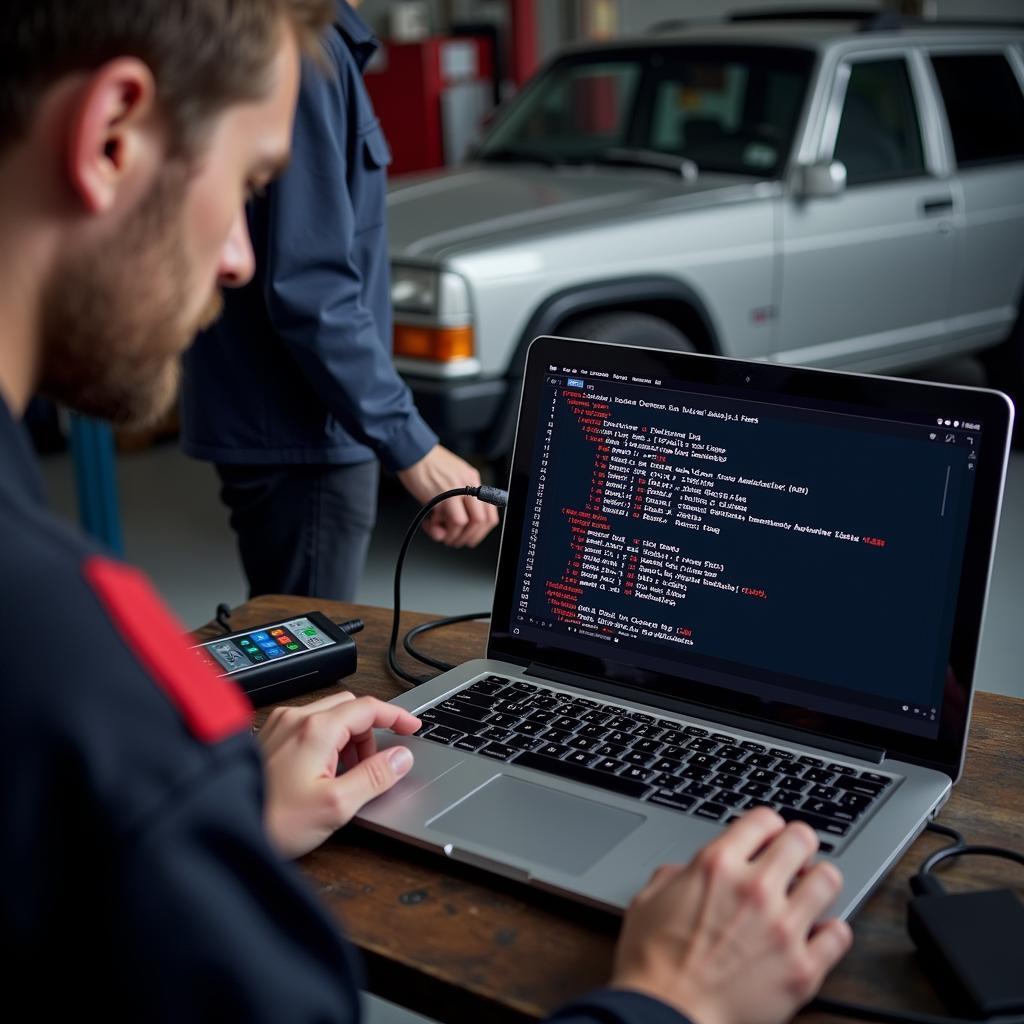The anti brake warning light, also known as the ABS (Anti-lock Braking System) light, is a crucial indicator of your vehicle’s safety. When illuminated, it signals a potential issue with your car’s braking system that requires immediate attention.
Ignoring this warning light could lead to reduced braking efficiency, particularly in emergency situations. Modern vehicles heavily rely on the intricate network of sensors and modules that comprise the ABS system. This system is designed to prevent wheel lock-up during braking, thereby maximizing tire contact with the road and enhancing vehicle control.
Deciphering the Warning: Understanding the Anti Brake Light
The anti brake warning light is typically represented by a circle containing the letters “ABS” or an exclamation point within a circle, surrounded by parentheses. When the light illuminates:
- Solid Illumination: This typically indicates a detected malfunction within the ABS system.
- Flashing Light: A flashing light often suggests a more critical issue requiring immediate attention.
 Anti-Brake Warning Light on Dashboard
Anti-Brake Warning Light on Dashboard
Common Causes of an Anti Brake Warning Light
Various factors can trigger the anti brake warning light. Here are some of the most prevalent culprits:
- Faulty ABS Wheel Speed Sensors: These sensors, located at each wheel, monitor wheel speed and relay this information to the ABS control module.
- Malfunctioning ABS Module: The ABS module is the “brain” of the system, responsible for processing sensor data and regulating brake pressure. A faulty module can disrupt the entire system.
- Low Brake Fluid Level: Insufficient brake fluid can disrupt hydraulic pressure, impacting ABS functionality.
- Worn Brake Pads: While not directly related to the ABS system, excessively worn brake pads can trigger warning lights as a safety precaution.
- Damaged ABS Wiring: Corrosion, loose connections, or physical damage to the wiring harness can impede communication between ABS components.
Diagnosing the Problem: Next Steps
“When a driver sees the anti brake warning light, it’s crucial to get a professional diagnosis,” says John Miller, a certified automotive electrician with over 20 years of experience. “Attempting DIY fixes without proper knowledge can exacerbate the issue.”
Here’s a recommended course of action:
- Read Trouble Codes: Retrieving diagnostic trouble codes (DTCs) using a scan tool provides specific insights into the problem.
- Inspect Brake Fluid: Check the brake fluid level and look for any leaks in the brake lines or master cylinder.
- Visual Inspection: Examine the ABS wiring harness, connectors, and components for visible damage.
- Test ABS Components: Testing sensors, the ABS module, and other parts requires specialized equipment and expertise.
 Mechanic Diagnosing Anti-Brake Warning Light Using a Scan Tool
Mechanic Diagnosing Anti-Brake Warning Light Using a Scan Tool
Addressing the Issue: Repair and Reset
Once the root cause is identified, addressing the issue might involve:
- Sensor Replacement: Faulty wheel speed sensors often require replacement.
- Module Repair or Replacement: Depending on the severity, the ABS module may need repair or replacement.
- Fluid Top-up or Bleeding: Low brake fluid necessitates a top-up, while air in the system requires bleeding.
- Wiring Repair: Damaged wiring necessitates repair or replacement of the affected section.
After repairs, the ABS system must be reset by clearing the trouble codes. This ensures the warning light turns off and the system functions correctly.
Preventive Measures: Keeping Your ABS in Check
- Regular Brake Inspections: Adhering to your vehicle’s recommended brake inspection schedule is crucial.
- Quality Brake Fluid: Use high-quality brake fluid and flush the system as recommended by your manufacturer.
- Mindful Driving: Avoid harsh braking habits that can strain the braking system.
Conclusion
The anti brake warning light serves as a critical safety reminder. Promptly addressing any underlying issues ensures the proper functioning of your vehicle’s Anti-lock Braking System. Don’t ignore this warning; prioritize your safety and schedule a professional diagnosis to keep your vehicle’s braking system in optimal condition.
You can find more information about specific car models and their anti brake warning lights by visiting our dedicated pages on c1500 1996 anti lock brake warning light, Buick anti lock brake warning light, or anti lock brake warning light in instrument cluster.
FAQs
1. Can I still drive with the anti brake warning light on?
While you might technically still be able to drive, it’s highly discouraged. The ABS system might not engage properly during emergency braking, compromising safety.
2. How much does it cost to fix an anti brake warning light?
The cost varies significantly depending on the underlying cause. Sensor replacement can be relatively affordable, while module repairs or replacement can be more expensive.
3. Will a dead battery trigger the anti brake warning light?
A dead battery usually doesn’t directly trigger the ABS light. However, disconnecting and reconnecting the battery might temporarily illuminate warning lights until the system completes a self-check.
4. Does the anti brake warning light relate to the parking brake?
No, the anti brake warning light (ABS) is separate from the parking brake warning. The parking brake usually has its designated warning light.
5. Can extreme temperatures affect the ABS system?
Extreme temperatures, especially extreme cold, can sometimes impact ABS functionality and potentially trigger warning lights.
